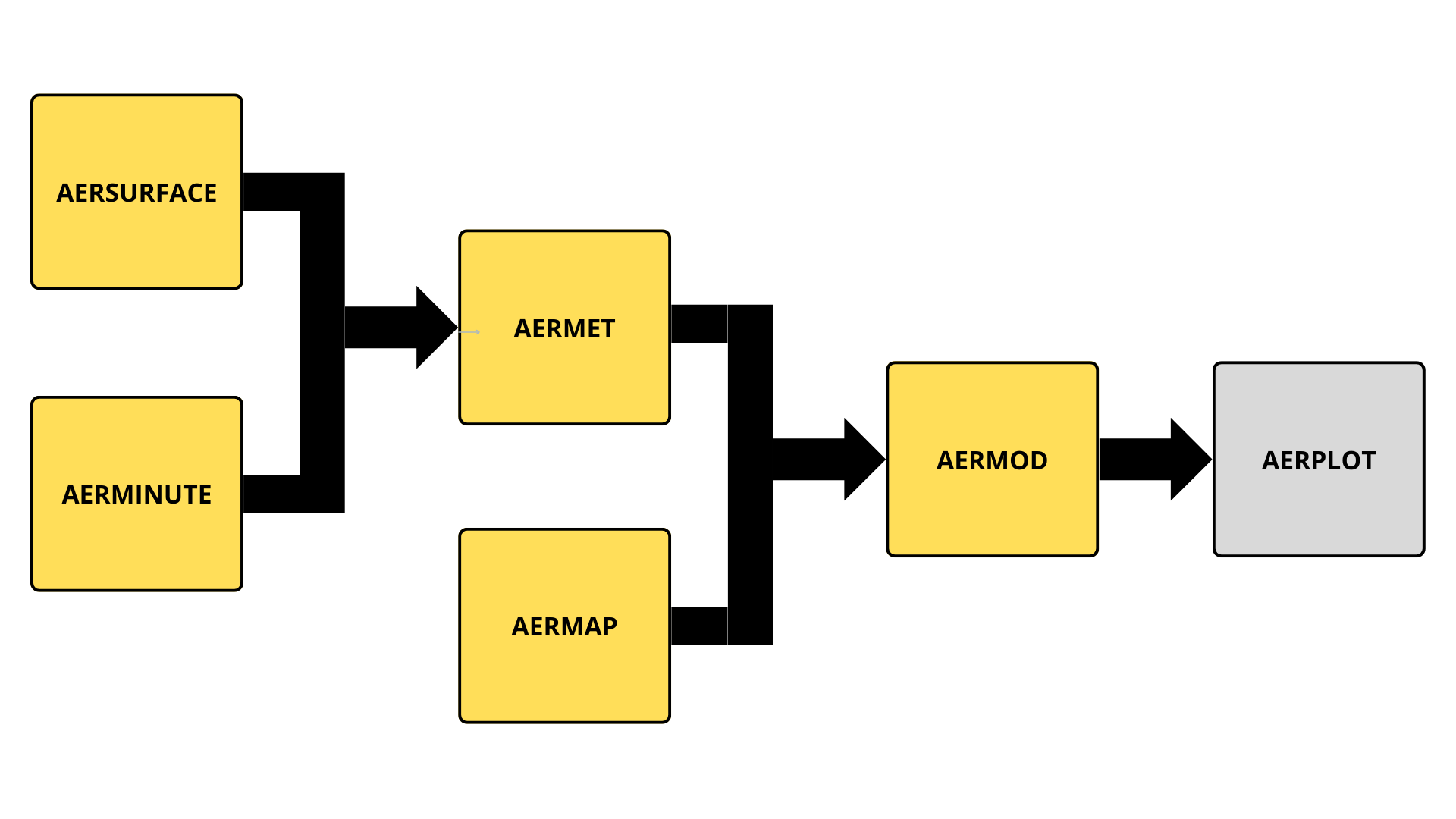Table of Contents
1. Introduction to AERMOD
BEFORE ANYTHING
Before starting to work, it is extremely important that we define the file creation folder.
First, create a folder on the desktop called AermodTutorial (it will be addressed roughly like this: C:\Users\Client\Desktop\AermodTutorial). Now, create 5 new subfolders inside it, where we will work with each of the processors, as we can see in the Figure 1. They are:
Figure 1
What is AERMOD?
AERMOD (American Meteorological Society/Environmental Protection Agency Regulatory Model) is an atmospheric dispersion model developed by the U.S. EPA (Environmental Protection Agency) in collaboration with the American Meteorological Society (AMS). It is designed to assess air quality by estimating pollutant concentrations emitted from industrial and other stationary sources.
This document is not only a tutorial for running AERMOD, but also a comprehensive technical guide. The objective is to simulate a real-world dispersion scenario in Bloomington, Illinois (IL), using:
- Land cover data from the year
2023, as they are the most recent available for surface parameterization usingAERSURFACE; - Result visualization using the AERPLOT utility.
By completing this guide, you will not only learn how to set up and run the AERMOD modeling system, but also acquire all the technical skills necessary to apply it professionally anywhere in the world.
Purpose
AERMOD is used for:
- Assessing environmental impacts from atmospheric emissions;
- Checking compliance with air quality standards;
- Supporting environmental permitting processes;
- Simulating pollutant dispersion under different meteorological conditions.
How it works
AERMOD simulates the transport and dispersion of pollutants in the atmosphere based on local meteorological conditions, terrain features, and emission source characteristics. The model requires preprocessed input data from auxiliary tools, including:
| Tool | Description |
|---|---|
| AERSURFACE | Calculates land use parameters such as surface roughness, albedo, and Bowen ratio. |
| AERMET | Processes surface and upper air meteorological data (e.g., from radiosondes). |
| AERMAP | Determines terrain characteristics for each receptor location. |
| AERPLOT | Generates maps and visuals from AERMOD outputs to support interpretation and reporting. |
In Figure 2 we can observe the flowchart of these processors.
Figure 2
Using these inputs, AERMOD calculates hourly pollutant concentrations at specific receptor locations, accounting for:
- Horizontal and vertical dispersion;
- Atmospheric stability effects;
- Terrain elevation influences;
- Different source types (point, area, volume, and line sources).
Output
AERMOD output includes:
- Hourly, daily, monthly, or annual pollutant concentrations;
- Statistics for comparison with legal thresholds (e.g., percentiles);
- Pollution plume maps (when used with external visualization tools).
Typical Applications
- Chemical and petrochemical industries;
- Thermoelectric power plants;
- Landfills and incineration facilities;
- Environmental licensing studies;
- Emergency atmospheric release modeling.
Notes
- AERMOD is recognized as a regulatory model by the
U.S. EPA and is widely adopted internationally — including inBrazil— for environmental impact studies involving atmospheric emissions. - The only operating system capable of running AERMOD is Windows.
- For the simulation period in AERMOD itself, we will generate outputs for only one day, in order to ensure better optimization for our future work.
- With this document, we ensure its applicability to the entire
United Statesand a large part of the globe.

